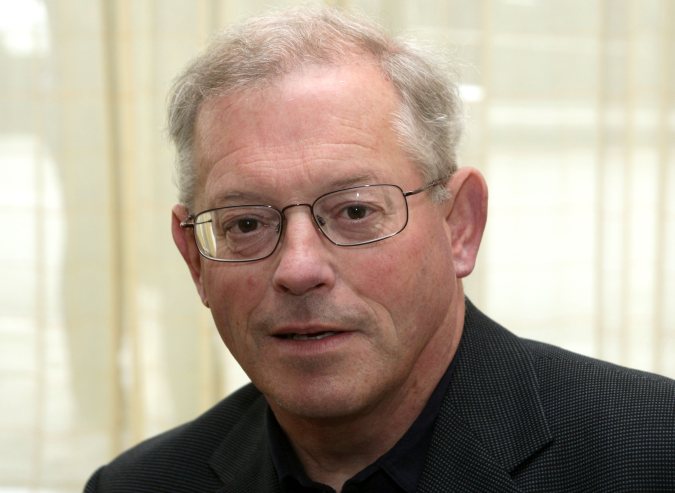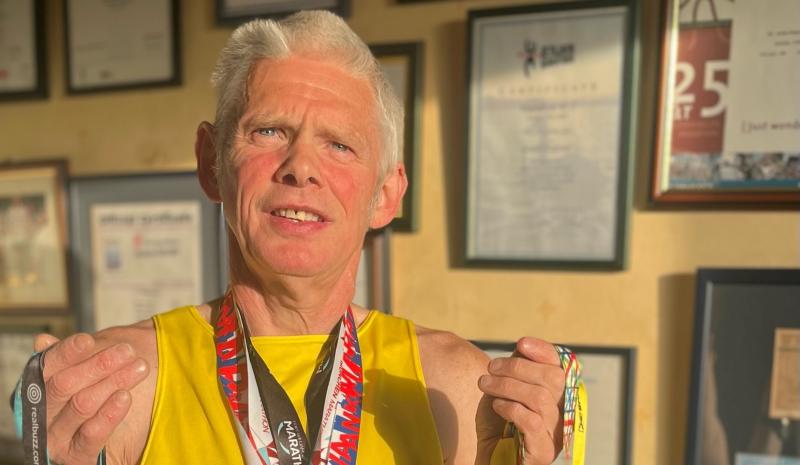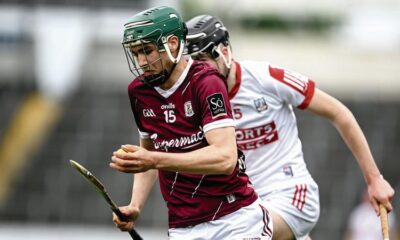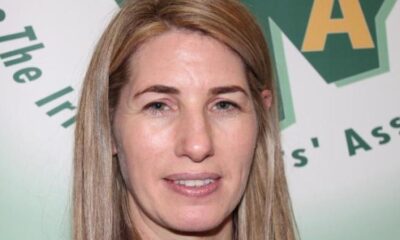News
Tuam Children’s Home – emotional minefield of rights

This article was written by the late Connacht Tribune Group Editor, John Cunningham, and first published in the newspaper on April 24, 1998.
“What were the young women to do? Many weren’t wanted at home, they were ostracised by society … in those days a young woman could not become pregnant and stay at home. It was as simple as that. I saw the devastation when they were parted from their children … they nursed the child and looked after it for a year and then they went one way and the child stayed to be adopted, or to be boarded-out a few years later. I don’t know if many of them ever recovered from the heart-breaking parting.” John Cunningham writes on undoing the heartbreak of forty years ago.
The Chairperson of the Irish Birth Mothers’ Association, Mary Scully, has been quoted in the past week on the issue of trying to legislate for the potentially conflicting rights of adopted people in their search for their ‘birth mother’ and the right to privacy of the birth mother. She is quoted as saying “if I was a politician I would run a mile from it”.
Much of the discussion to date has tended to concentrate on the rights of the adopted people to gain access to the records, and potentially, to their birth mother. It is intended to clear up a difficult situation which has arisen through the increasing demand for adoptees to trace their true mothers.
For instance, the attempts to trace mothers have led to adoptees asking for access to Birth Certificates (to which they are entitled). Any person can look at the records for any day – the problem for adoptees is that they are not entitled to be told which are their particular records out of all those registered for the date of their birth.
So, people who were placed for adoption have been known to trawl through the details of births on the date of their birth, and begin trying to find out by process of elimination which was their birth mother.
It is into the middle of this controversy that Junior Minister Frank Fahey, TD, has been projected in trying to frame legislation and a system of coping with the potential minefield of emotional issues between the rights of mothers who gave up their children for adoption maybe forty years or more ago, and children place for adoption then who want their questions answered now.
To date, much of the publicity has surrounded the issue of children finding their mothers. The need for such an identity, for explanations, to find if mothers are still alive, the need to know why, has become an undeniable demand from children of this country who need to flesh out their identity. Above all, they are seeking explanations for what happened forty or fifty years ago.
But what of the mothers? For instance, they may have just such emotional need for the child placed for adoption so many years ago, but what of the impact of a son or daughter of decades previously walking into a life that has been built since – maybe a life with a husband and family who know nothing of what happened all those years ago.
It was one of the difficulties into which I ran personally some years ago when I began to research the Children’s Home in Tuam. My links to it were unusual. I spent the first seven years of life there and felt somewhat better qualified than most to, possibly, look at life there in the late ‘forties and early ‘fifties when Ireland was a very much different place.
My mother died shortly after I was born and because of the close proximity of The Children’s Home to my family home, and because rearing a sickly infant would be well nigh impossible for a widower who already had four young children, I was reared at The Home, though regularly spending some time at home as well. Perhaps the best explanation may be that I found a ‘mother’ there in The Home and ended up with two homes – my natural one where my family lived and my father worked, my mother figure lives, and I had dozens of sisters and brothers, the other children who were in The Home at the time.
It is important to understand the ‘culture’ of the time. The children there were in most cases orphans to all intents and purposes – perhaps the family had been struck by tragedy, but in the vast majority of cases they were the children of unmarried mothers who had become pregnant and had come into The Home for about a year.
At the end of that year, the mother usually left and the child was either put up for adoption or possibly for ‘boarding out’ a few years later to families who acted as guardians. Children could be lucky in either – but many of them would say today that they had to be extraordinarily lucky in boarding out not to become, essentially, unpaid slaves to families.
One has to be careful of any impressions gained in childhood, though memories of The Children’s Home can be extraordinarily vivid – long passageways dominated by the smell and shine of ‘Cardinal’ red polish on the floors, long lines of potties, of the inexplicably large numbers of young women, and of the mysterious business of the arrival and departure of the same young women, and apparently endless numbers of babies and toddlers.
Some of the women, like my surrogate mother (Mary) stayed on for life – possibly because they were brilliant nurses for newborn babies that were in lines in cots. They had to be brilliant nurses, for the infants were then potential victims for diseases which we now regard as just a nuisance, likes measles, whooping cough, scarlet fever, the mumps. Today, that wonderful woman would probably be described as ‘institutionalised’. Probably she was.
There were searing and emotional partings. One of the people to whom I spoke is now a woman in her sixties and who was somewhat older than many of the youngsters in The home at the time.
She was better equipped to judge the devastation of parting a mother and child. I was a spoiled brat with a family down the road and an adoring ‘mother’ in The Home.
She put it this way: “What were the young women to do? Many weren’t wanted at home, they were ostracised by society … in those days a young woman could not become pregnant and stay at home. It was as simple as that. I saw the devastation when they were parted from their children … they nursed the child and looked after it for a year and then they went one way and the child stayed to be adopted, or to be boarded-out a few years later. I don’t know if many of them ever recovered from the heart-breaking parting. For instance, I was boarded-out myself. That was the way Ireland was at the time … but I will never forget the parting of some of the mothers and their children. It was heart-rending.”
From these remarks it is possible to gauge just some of the potential emotion which could be released forty or fifty years later for mother and child once involved in such a parting.
To understand the decision of the mother and the time, it is necessary to remember the particular conditions of the time – the mother was often a mere child herself of seventeen or eighteen; given the social conditions and the sexual taboos of the time, many of them would not even have understood the concept of pregnancy, not to mind motherhood. Such a pregnancy in the ‘thirties, ‘forties and ‘fifties involved a perceived shame for a family who very often wanted to hide away the ‘fallen daughter’; unmarried mothers were ostracised from a society which was Jansenistic in its approach to sexuality and ‘sins of the flesh’ were tailed against by the church. (Interestingly, those who paid for the ‘sins’ were the women).
This was the atmosphere against which the teenage mothers made their decision to ‘give up’ their babies – though some of those I have spoken to in research work in the past few years have, happily, been reunited with their birth mothers and mothers have found their children.
What may be forgotten is that at least some of these girls of the forties and fifties may have since built up a life for themselves where their families may know little or nothing of the history from that time.
The women involved can never forget – but time may at least have dulled the pain of the parking. In my research work – and remember some of the children of the era were mu ‘sisters’ and ‘brothers’ from that unusual setting in The Home – it is quite clear that there is at least concern on the part of some on the opening up of old memories.
Concern now in drafting legislation and methods of children making contact with birth mothers and vice versa, has to be for the two distinct groupings.
A birth mother from the era might just dread the knock on the door and opening it to be greeted by “hello … I think you may be my mother”. In some cases, children also will not want a whole era reopened. Equally, it has to be said that parties on both sides may dearly wish to contact the other.
I felt it was important to write this piece so that the plight of the birth mothers might be taken note of. They too have undergone pain – the pain of parting from a child because they were unmarried mothers in an era when society saw them as sinners, and outcasts. It was a society that preferred to have them and their children inside the walls of institutions like The Children’s Home … fallen women and ‘Home Babies’.
Today, they are determined to have the rights once denied to them.
Connacht Tribune
West has lower cancer survival rates than rest

Significant state investment is required to address ‘shocking’ inequalities that leave cancer patients in the West at greater risk of succumbing to the disease.
A meeting of Regional Health Forum West heard that survival rates for breast, lung and colorectal cancers than the national average, and with the most deprived quintile of the population, the West’s residents faced poorer outcomes from a cancer diagnosis.
For breast cancer patients, the five-year survival rate was 80% in the West versus 85% nationally; for lung cancer patients it was 16.7% in the west against a 19.5% national survival rate; and in the West’s colorectal cancer patients, there was a 62.6% survival rate where the national average was 63.1%.
These startling statistics were provided in answer to a question from Ballinasloe-based Cllr Evelyn Parsons (Ind) who said it was yet another reminder that cancer treatment infrastructure in the West was in dire need of improvement.
“The situation is pretty stark. In the Western Regional Health Forum area, we have the highest incidence of deprivation and the highest health inequalities because of that – we have the highest incidences of cancer nationally because of that,” said Cllr Parsons, who is also a general practitioner.
In details provided by CEO of Saolta Health Care Group, which operates Galway’s hospitals, it was stated that a number of factors were impacting on patient outcomes.
Get the full story in this week’s Connacht Tribune, on sale in shops now, or you can download the digital edition from www.connachttribune.ie. You can also download our Connacht Tribune App from Apple’s App Store or get the Android Version from Google Play.
Connacht Tribune
Marathon Man plans to call a halt – but not before he hits 160 races

On the eve of completing his 150th marathon, an odyssey that has taken him across 53 countries, Loughrea’s Marathon Man has announced that he is planning to hang up his running shoes.
But not before Jarlath Fitzgerald completes another ten races, making it 160 marathons on the occasion of his 60th birthday.
“I want to draw the line in 2026. I turn 57 in October and when I reach 60 it’s the finishing line. The longer races are taking it out of me. I did 20 miles there two weeks ago and didn’t feel good. It’s getting harder,” he reveals.
“I’ve arthritis in both hips and there’s wear and tear in the knees.”
We speak as he is about to head out for a run before his shift in Supervalu Loughrea. Despite his physical complaints, he still clocks up 30 miles every second week and generally runs four days a week.
Jarlath receives injections to his left hip to keep the pain at bay while running on the road.
To give his joints a break, during the winter he runs cross country and often does a five-mile trek around Kylebrack Wood.
He is planning on running his 150th marathon in Cork on June 4, where a group of 20 made up of work colleagues, friends and running mates from Loughrea Athletics Club will join him.
Some are doing the 10k, others are doing the half marathon, but all will be there on the finishing line to cheer him on in the phenomenal achievement.
Get the full story in this week’s Connacht Tribune, on sale in shops now, or you can download the digital edition from www.connachttribune.ie. You can also download our Connacht Tribune App from Apple’s App Store or get the Android Version from Google Play.
CITY TRIBUNE
Galway ‘masterplan’ needed to tackle housing and transport crises

From the Galway City Tribune – An impassioned plea for a ‘masterplan’ that would guide Galway City into the future has been made in the Dáil. Galway West TD Catherine Connolly stated this week that there needed to be an all-inclusive approach with “vision and leadership” in order to build a sustainable city.
Deputy Connolly spoke at length at the crisis surrounding traffic and housing in Galway city and said that not all of the blame could be laid at the door of the local authority.
She said that her preference would be the provision of light rail as the main form of public transport, but that this would have to be driven by the government.
“I sat on the local council for 17 years and despaired at all of the solutions going down one road, metaphorically and literally. In 2005 we put Park & Ride into the development plan, but that has not been rolled out. A 2016 transport strategy was outdated at the time and still has not been updated.
“Due to the housing crisis in the city, a task force was set up in 2019. Not a single report or analysis has been published on the cause of the crisis,” added Deputy Connolly.
She then referred to a report from the Land Development Agency (LDA) that identified lands suitable for the provision of housing. But she said that two-thirds of these had significant problems and a large portion was in Merlin Park University Hospital which, she said, would never have housing built on it.
In response, Minister Simon Harris spoke of the continuing job investment in the city and also in higher education, which is his portfolio.
But turning his attention to traffic congestion, he accepted that there were “real issues” when it came to transport, mobility and accessibility around Galway.
“We share the view that we need a Park & Ride facility and I understand there are also Bus Connects plans.
“I also suggest that the City Council reflect on her comments. I am proud to be in a Government that is providing unparalleled levels of investment to local authorities and unparalleled opportunities for local authorities to draw down,” he said.
Then Minister Harris referred to the controversial Galway City Outer Ring Road which he said was “struck down by An Bord Pleanála”, despite a lot of energy having been put into that project.
However, Deputy Connolly picked up on this and pointed out that An Bord Pleanála did not say ‘No’ to the ring road.
“The High Court said ‘No’ to the ring road because An Bord Pleanála acknowledged it failed utterly to consider climate change and our climate change obligations.
“That tells us something about An Bord Pleanála and the management that submitted such a plan.”
In the end, Minister Harris agreed that there needed to be a masterplan for Galway City.
“I suggest it is for the local authority to come up with a vision and then work with the Government to try to fund and implement that.”












